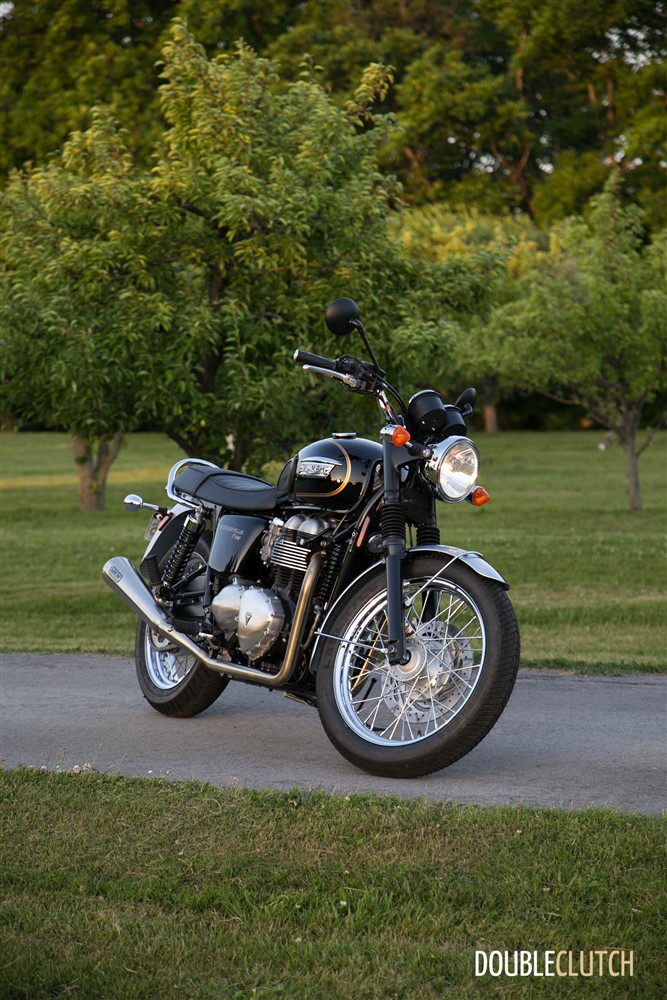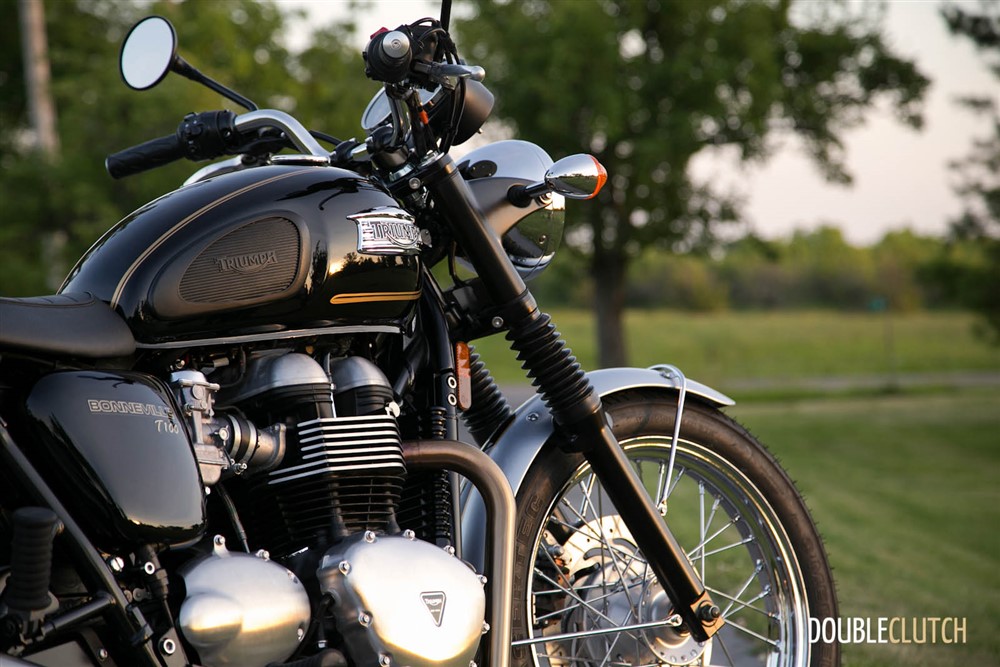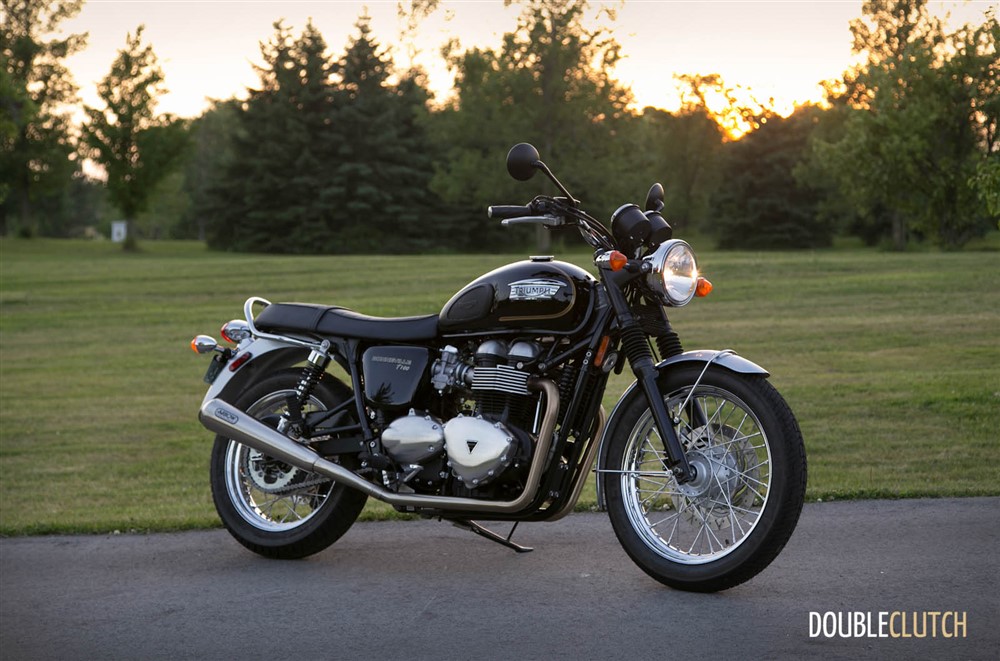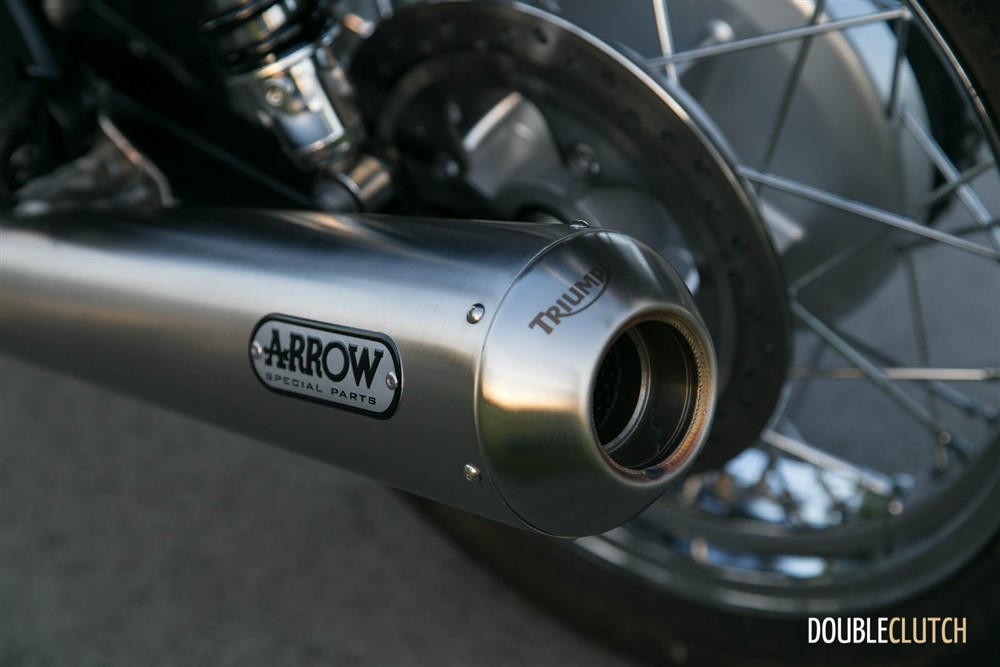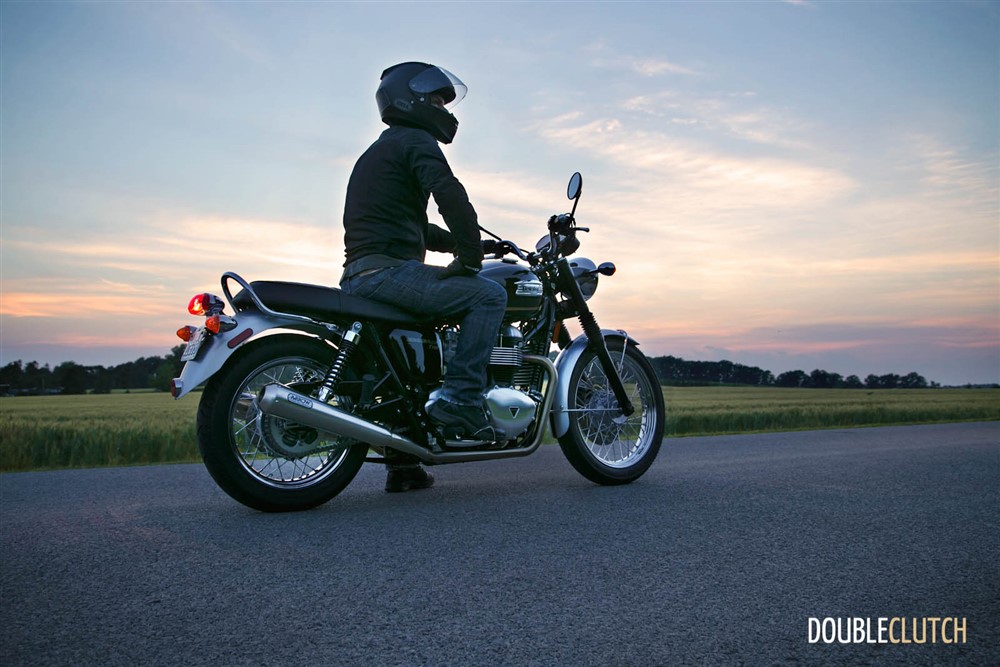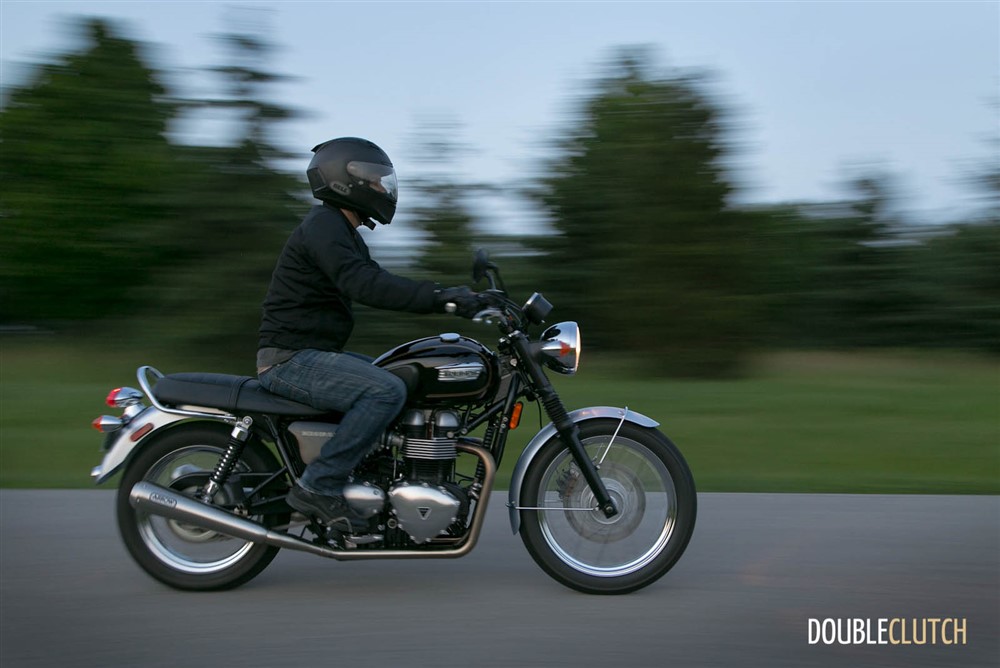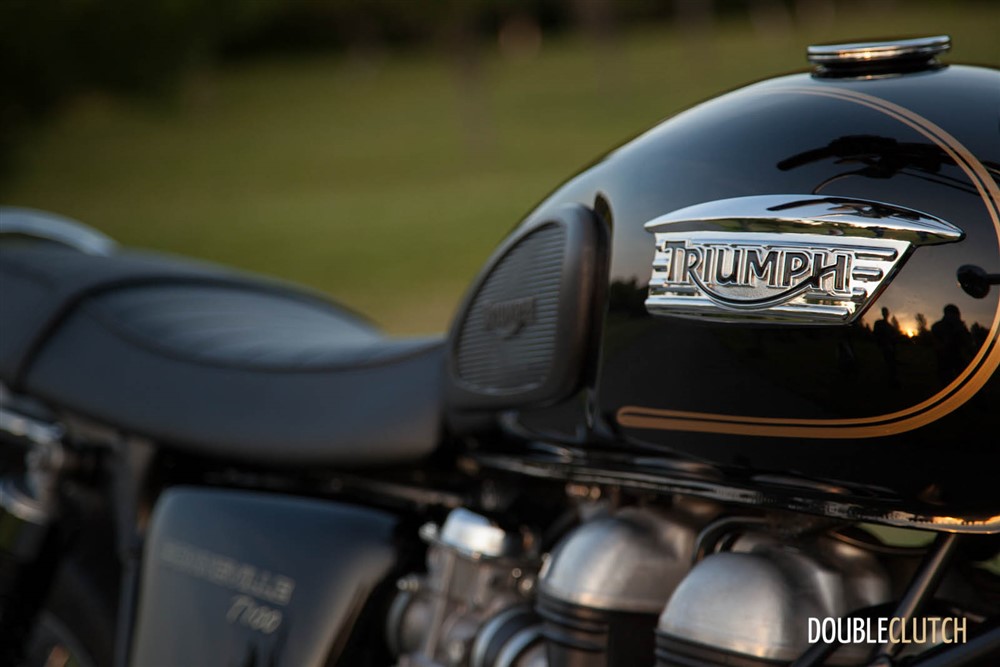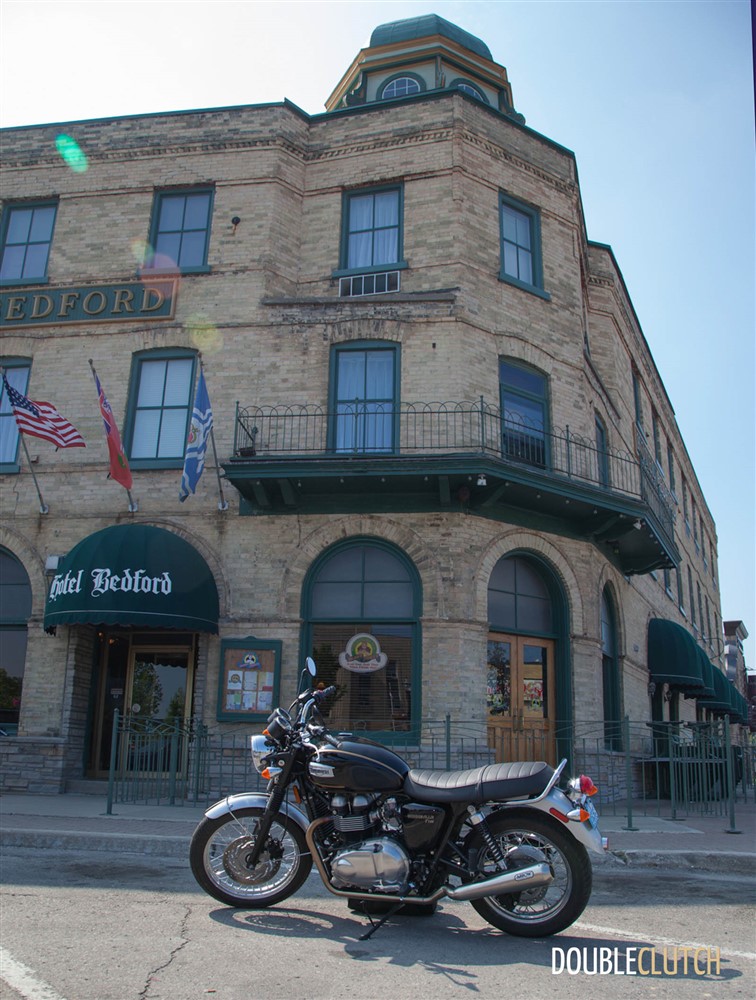There’s cool, then there’s legendary-icon cool. Levi’s jeans, a Zippo lighter and Steve McQueen undisputedly fall into that latter category. As far as motorcycles go, there are few others as iconic as the timeless Triumph Bonneville.
Triumph first introduced the Bonneville (named after the famed Salt Flats in Utah where the company chased motorcycle speed records) in 1959, and the test bike you see here does not look all that different from its great grandfather from all those years ago. What else than a legendary icon can get away with keeping its design for more than half a century with so very little visual change yet still retain its swagger?
Don’t believe me? No matter where I stopped somebody would pay the black and gold beauty a compliment, reaffirming its universal aesthetic appeal. And not just gear heads either, at one point while refueling, a very elderly lady who appeared to be on her way to or from church stopped to say “what a lovely motorcycle.” Praise from a highly unlikely source, but praise nonetheless.
I can assure you, that this has never happened when I’ve been riding any other contemporary cruiser or sport bike.
The “Bonnie” is a standard style motorcycle whose proportions pretty much define what a motorcycle should look like. The wheel size (and spokes), fenders, gas tank shape and big single headlight all just look right. The T100 offers additional styling cues over the standard Bonneville, including chromed engine covers, two-tone paint, fork gaiters and those gorgeous wire wheels.
Our test bike is a T100 Special Edition featuring a few additional visual treats like the brushed finish engine covers, chrome rear grab handle, black tank with hand-painted coach lines and black finished mirror housings. This design harkens back to the last of the last of the T140s to roll off the Meriden production line more than thirty years ago.
Despite its classic styling, the only mechanical similarity the new Triumph shares with the original is its parallel twin cylinder engine configuration. Size has grown over the years from 650cc to 750cc and then to 865 in T100 trim.
With 68 hp and 50 lb-fts of torque motivating the 214 kg (dry) bike, the T100 is no longer vying for land speed records. But its torque delivery is low, peaking at 5,800 rpms and means that it’s happiest when ridden in the 4,000-7,000 section of the rev range. This is still ample get-up-and-go to keep the Triumph ahead of most four-wheeled traffic and passing is still fairly effortless, but shouldn’t threaten to pull anyone’s arms off at their shoulders.
Chasing some other riders on more modern design bikes through the Halliburton back roads, the Bonneville still proves to be a lot of fun to press, though the skinny Metzelers (100/90-19 front and 130/80 R17 rear) weighed on my mind putting down nowhere near the grip of a proper sport or sport touring tires. The single front and rear discs do a fine job of arresting speed, though again, you wouldn’t want to use them for track day competition.
No matter though since the T100 is more about enjoying the freedom of the open road and cruising with an endless smile on your face imagining you’re in a bygone era than it is knee dragging. It’s this exhilarating reminder of a simpler time had me racking up nearly 700 km with Bonnie in only four days of riding and causes old guys like the Harley rider I encountered to stop and stare dreamily for a moment before wistfully declaring that he must get his ’69 Bonneville back on the road. To him, that’s his one life-long true love. His current ride he called the tramp to pass the time.
That classic upright riding position means it’s a remarkably comfortable machine to spend several hours riding too. However it should be noted that at highway speeds, the buffeting and wind force on the body can grow a little tiresome after long stints in the saddle.
But it’s that comfortable riding position that contributes to how fantastically easy the Bonneville is to ride; that and the torquey power delivery. Excellent low-speed maneuverability and a smooth and steady throttle mean even beginners can execute effortless turns at parking lot speed and negotiate urban traffic with minimal stress.
The kind folks at Triumph fitted the factory-option Arrow pipes to the test bike, replacing the classic peashooter style that comes standard on the T100. Out of the box, the Arrows are relatively tame, only hinting at the fury that’s unleashed if the baffles are removed. Curiosity got the best of me and after pulling out the plugs, the T100 blatted out a ripping staccato unique to the old Trumpets. My riding buddies and I all grinned maniacally whenever we heard it, but it is offensively loud.
Owning and operating antique machinery always comes with a series of headaches and concerns. “Which part am I going to need to replace when thing breaks down again?” “Will these meager brakes actually stop me?” “I have to order that replacement part from where and for how much?!” The T100 gives all the glory of the classic bike with modern reliability and capability.
One word of caution: the retro cool ignition on the left fork is not as sturdy as it could be and switched itself off from the wind-buffeting on the key chain during some elevated speed passes. Be sure to keep your Triumph key separate from other keys and dangly things.
With the passion and style of 50 years of heritage, Triumph’s Bonneville T100 looks like it should be kept hidden away in a museum or private collection for all but the most special of occasions. The reality it is that it’s a sensational daily rider or weekend warrior and a bike I hope to add to my personal collection.
List Price: $10,499
Options: Arrow 2/2 exhaust: $1,290
As-tested: $11,789.22
2014 Triumph Bonneville T100 Gallery








